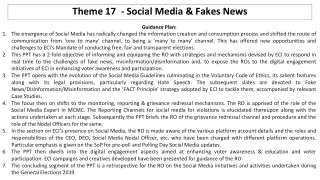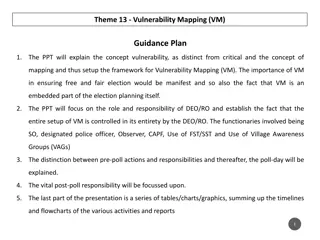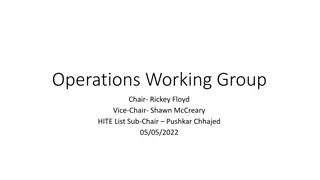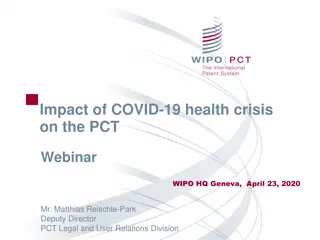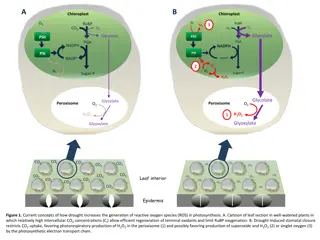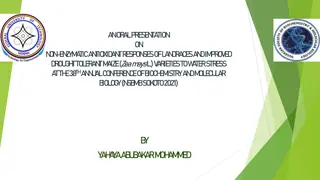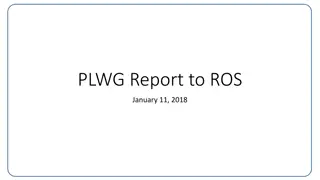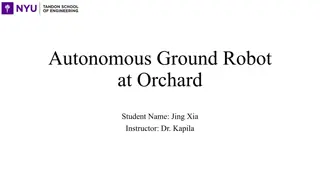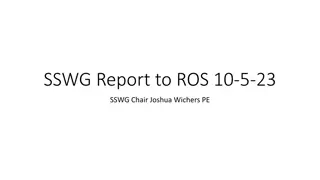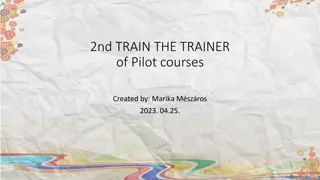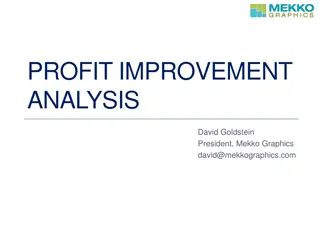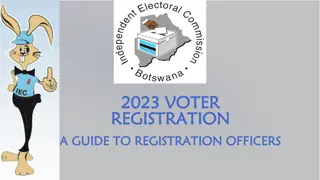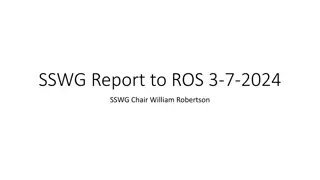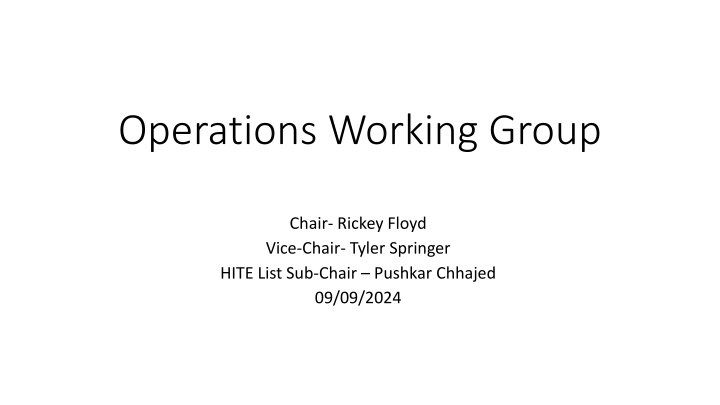
ERCOT Update: Operations Working Group and Texas Reliability Entity Reports
Stay informed with the latest updates from ERCOT, including peak demand reports, renewable energy statistics, and regulatory developments. Explore key discussions on planning criteria, voluntary load registrations, and system reliability efforts in the Texas energy sector.
Uploaded on | 1 Views
Download Presentation

Please find below an Image/Link to download the presentation.
The content on the website is provided AS IS for your information and personal use only. It may not be sold, licensed, or shared on other websites without obtaining consent from the author. If you encounter any issues during the download, it is possible that the publisher has removed the file from their server.
You are allowed to download the files provided on this website for personal or commercial use, subject to the condition that they are used lawfully. All files are the property of their respective owners.
The content on the website is provided AS IS for your information and personal use only. It may not be sold, licensed, or shared on other websites without obtaining consent from the author.
E N D
Presentation Transcript
Operations Working Group Chair- Rickey Floyd Vice-Chair- Tyler Springer HITE List Sub-Chair Pushkar Chhajed 09/09/2024
ERCOT Updates and System Operation Report Unofficial Peaks Reported by ERCOT July Peak Demand 81,010 on 7/1/24 at HE 1800 July Solar Penetration 20,484 MW on 7/31/24 at 1431 - New all-time peak July Renewable 38,846 MW on 7/30/24 at 1319 at 51% New all-time peak
Texas Reliability Entity Report 8/13/24 notice out for IBR standards being worked on for FERC order 901, PRC 28, and PRC 30 passed as well as IBR definitions. PRC 29 failed. BAL-001 TRE SAR comment period ended yesterday. Next step goes to MRC meeting in September to review and approve. If approved, it will go to standard drafting team to make changes. TPL - 008 out for comment. SAR posted for EOP-012 on NERC site. Workshop for cyber and physical security on Aug 28 at Texas RE agenda on TRE website
NPRR 1070 - Planning Criteria for GTC Exit Solutions ERCOT is currently still working with PUC staff to finalize the language on the congestion cost savings criteria and does not have a specific timeline on the posting yet. Remains tabled at OWG.
NPRR 1238 - Voluntary Registration of Loads with Curtailable Load Capabilities (Remains tabled) Comments filed from ONCOR on 8/14 Martha change definition of VECL to remove Transmission connection, due to larger distribution interconnection requests. Section 14 Proposing all interconnection utilities acknowledge the VECL registration, and adjusted Form T tile. All entities associated should know and agree to VECL registration and have the ability to disconnect the customer if needed. Requesting a notice from ERCOT when VECL can be reconnected to the system. Bill Blevins ERCOT is also working on some comments, Bill has reviewed the ONCOR comments and they added some clarification that ERCOT was working on, close to what ERCOT was working on. CPS Energy (Helena) has several comments and they would like time to review and address. They want to really understand the VECL MW caps. Does ERCOT have an intent on capping the participation in the program? Bill Blevins, ERCOT has not suggested an upper limit, does not think there will be a lot of participation in the program. Discussion on how VECL load is accounted for load shed percentages. Will TDSP s with no VECL s see an increase in load shed percentage? Golden spread supports no upper limit on VECL registration. Can VECL s be used for IROL load shed? Per ERCOT not really, but ERCOT could look into it.
NOGRR 265 Related to NPRR 1238 Voluntary Registration of Loads with Curtailable Load Capabilities (Remains tabled) ONCOR Comments - recommend 2 times a year updates to match Winter and Summer load shed table updates as appose to 4 times per year. CPS Comments (Not yet submitted, only reviewed at meeting) Recommends removing the load shed language from the NPRR, could be confusing for the public since ERCOT is not in an EEA 3. Require 24/7 support to implement VECL reduction should be verified in application process. Will ERCOT share the VECL deployments with all TDSP s or just impacted ones? Remove vague language May and replace with Shall instruct for not complying VECL s. Instructions are to be followed within 30 minutes. Will there be a requirement to have a single disconnect point to participate in the program? If removal requires opening path that causes other programs.
HITE List Review ERCOT has posted public submission. TDSP s reviewed changes with no comments. No additions to the MTE list. OWG achieved consensus on HITE list and recommends ROS endorsement.
OTWG Update No Update
2025 Ancillary Service Methodology Review Responsive Reserve Service (RRS) Methodology ERCOT is not proposing any change to the methodology used to compute RRS requirements in 2025. NERC s preliminary BAL-003 Interconnection Frequency Response Obligation (IFRO) for Operating Year (OY) 2025 assessment for ERCOT shows a increase in ERCOT s IFRO. In order to align with ERCOT s new IFRO, the minimum RRS-PFR limit for 2025 will change to 1,365 MW.
2025 Ancillary Service Methodology Review Regulation Service Methodology Specifically, ERCOT is proposing to set regulation quantities based on the error in forecasting the net load forecast that is used in to set dispatch target for SCED (i.e. GTBD).
2025 Ancillary Service Methodology Review ERCOT Contingency Reserve Service (ECRS) Methodology ECRS is reserved capacity that can respond in 10 minutes to recover frequency, cover forecast errors or ramps and replace deployed reserves. Currently, ECRS requirements are computed as to account for capacity needed to recover frequency following a large unit trip and capacity needed to support net load forecast errors during sustained net load ramps. For 2025, ERCOT is proposing to compute the minimum ECRS requirements as the larger of the capacity needed to recover frequency and capacity needed to support net load forecast errors. Along with these ERCOT is proposing to make the following two modifications Compute the capacity needed to recover frequency based on 70thpercentile of historic inertia. Remove the risk coverage during sunset hours to be at least 90th percentile in the calculation used to compute capacity needed for net load forecast error.
2025 Ancillary Service Methodology Review Non-Spinning Reserve Methodology Non-Spin is reserved capacity that can be started in 30 minutes to cover forecast errors, ramps or forced outages and replace deployed reserves until additional resources can be committed. ERCOT is proposing one change to the methodology used to compute the minimum Non-Spin requirements in 2025. Specifically, Non-Spin quantities for HE23 to HE06 are calculated using 4 Hours Ahead (HA) hourly average net load forecast error while rest of the year will be computed using 6 HA hourly average net load forecast error.
Other Business None.

